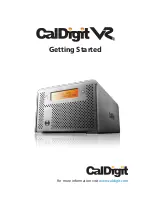
Note:
FlashCopy Logical Drive and Enhanced Remote Mirroring are premium features that you must
activate before you can use them. For more information about FlashCopy logical drives, see Chapter 5,
“Using the FlashCopy Premium Feature,” on page 5-1. For more information about Enhanced Remote
Mirroring, see Chapter 8, “About Enhanced Remote Mirroring premium feature,” on page 8-1.
The number and capacity of the logical drives in your storage subsystem depends on the type of
controller in the storage subsystem. The following table lists the maximum values for the logical drives in
a storage subsystem by specific controllers.
Table 4-4. Logical Drive Specifications by Supported Controller Model
Specifications
DS3200,
DS3300,
DS3400
DS3500
series
DCS3700
DCS3700 storage
subsystem with
Performance Module
Controllers
DS4200,
DS4700
DS4800
DS5100,
DS5300
DS3950,
DS5020
Maximum
logical drives per
storage
subsystem
256
512
1
512
2048
1024
2048
2048
1024
Maximum
logical drivers
per partition
256
256
2
256
256
256
256
256
256
Maximum
logical drive size
(less than 12 GB
for overhead)
Maximum disk
drives per
subsystem using
RAID 5
Maximum
remote mirrors
N/A
16
3
16
16
64
128
128
64
Note:
Addressable capacities greater than 2 TB are possible with some operating systems. Currently these
operating systems are Windows, Solaris 9, Solaris 10, AIX 5.2, AIX 5.3, HP-UX 11.23, and Linux 2.6.
A Windows operating system and a Linux 2.6 operating system using 500 GB disk drives can have a
maximum logical drive size of 112 TB (224 x 500) when controller firmware version 7.10.xx.xx or later is
installed in the DS4000 storage subsystem, or when controller firmware version 7.30.xx.xx is installed in
the DS5000 storage subsystem.
1
Firmware 7.77.xx.xx and later supports 512 logical drives per storage subsystem. Firmware 7.70.xx.xx
supports only 25 logical drives per subsystem.
2
Firmware 7.77.xx.xx and later supports 256 logical drives per partition. 7.70.xx.xx supports only 32
logical drives per partition
3
Requires firmware 7.77.xx.xx and later and enabling of the 16 remote mirrors premium feature.
RAID Levels
The RAID level defines a storage architecture in which the storage capacity on the disk drives in an
subsystem is separated into two parts: part of the capacity stores the user data, and the remainder stores
redundant or parity information about the user data. The RAID level that you choose determines how
user data is written to and retrieved from the disk drives. Using the script commands, you can define
five RAID levels: RAID 0, RAID 1, RAID 3, RAID 5, and RAID 6. Each level provides different
performance and protection features.
Chapter 4. Configuring a Storage Subsystem
4-13
Summary of Contents for System Storage DS3000
Page 599: ...Appendix A Examples of information returned by the show commands A 3...
Page 601: ...Appendix A Examples of information returned by the show commands A 5...
Page 603: ...Appendix A Examples of information returned by the show commands A 7...
Page 605: ...Appendix A Examples of information returned by the show commands A 9...
Page 607: ...Appendix A Examples of information returned by the show commands A 11...
Page 609: ...Appendix A Examples of information returned by the show commands A 13...
Page 611: ...Appendix A Examples of information returned by the show commands A 15...
Page 623: ...Appendix A Examples of information returned by the show commands A 27...
Page 625: ...Appendix A Examples of information returned by the show commands A 29...
Page 627: ...Appendix A Examples of information returned by the show commands A 31...
Page 651: ......
Page 652: ...Part Number 00W1466 Printed in USA GA32 0961 05 1P P N 00W1466...
















































